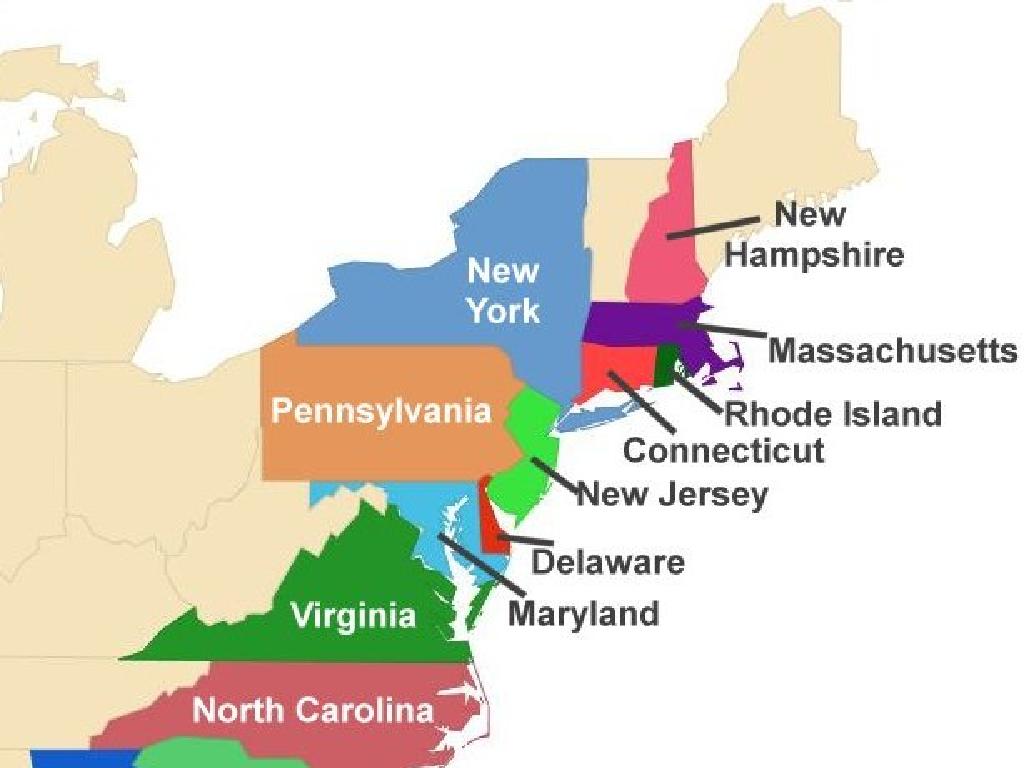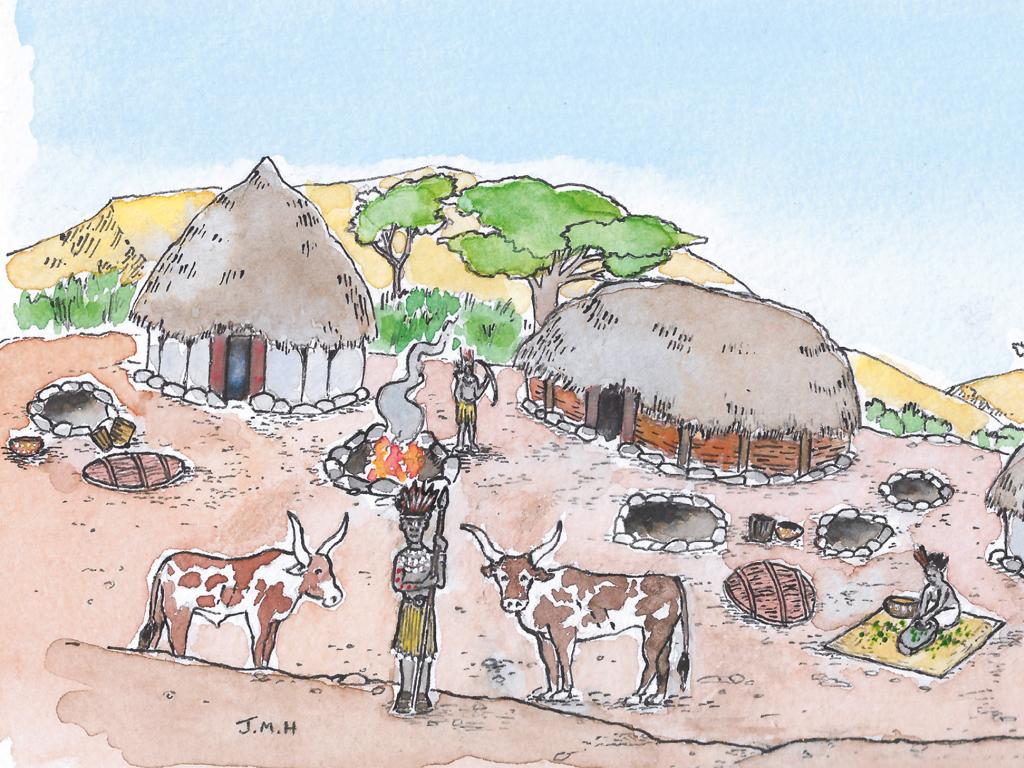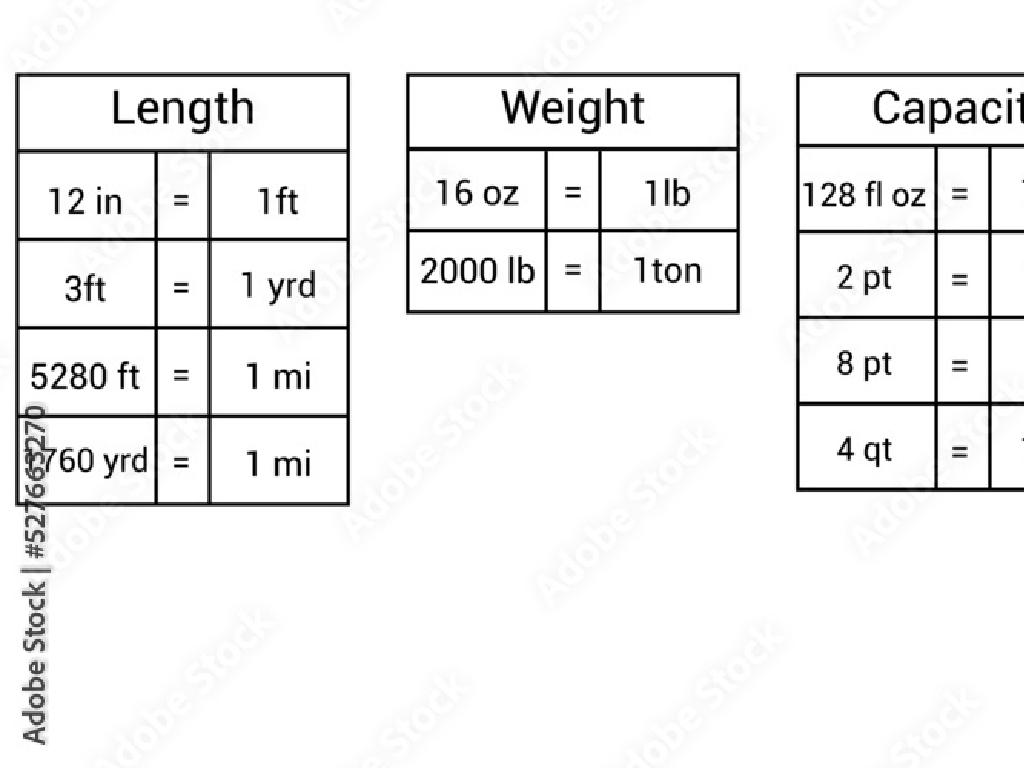Identify State Capitals Of The West
Subject: Social studies
Grade: Fifth grade
Topic: State Capitals
Please LOG IN to download the presentation. Access is available to registered users only.
View More Content
Exploring Western State Capitals
– What are state capitals?
– Capitals are cities where government buildings are located.
– Importance of state capitals
– They host important historical and political events.
– Examples from the West
– Sacramento, CA; Denver, CO; Phoenix, AZ.
– Fun facts about capitals
– Sacramento has the largest tree canopy in the U.S.
|
This slide introduces the concept of state capitals, focusing on those in the Western United States. Begin by explaining that a state capital is where the head of the state government is located, including the governor’s office and legislative buildings. Emphasize the significance of state capitals as centers for decision-making and historical events. Provide examples of Western state capitals and encourage students to locate them on a map. Share interesting facts to make the learning process engaging, such as unique features of certain capitals. This will help students remember and relate to the information more personally.
Exploring State Capitals in the West
– What is a state capital?
– It’s the city where the government is based.
– Key roles of state capitals
– They host the capitol building & governor’s office.
– State capitals as regional examples
– Examples: Boston in the East, Denver in the West.
– Focus on the West’s capitals
– Learn capitals like Sacramento, CA, and Olympia, WA.
|
This slide introduces the concept of state capitals, explaining their definition and the important roles they play in state government. It’s crucial to highlight that a state capital is not always the largest city in the state but is the administrative center. Provide examples of state capitals from various regions to give students a broader perspective, and then narrow the focus to the capitals of the Western states. Encourage students to think about what makes these capitals unique and to be ready to locate them on a map. This will set the stage for further exploration of each capital’s history and significance.
Exploring the Western States and Their Capitals
– Identify the Western States
– Unique features of the West
– Mountains, coastlines, and deserts define the West
– Quick facts about the Western region
– The West is known for its diverse landscapes and vibrant cities
– Learn state capitals of the West
|
This slide aims to introduce students to the Western States of the United States, focusing on their geography, unique features, and capitals. Start by showing a map to help students identify the Western States. Discuss the varied geography of the region, which includes features like the Rocky Mountains, Pacific Coast, and the Mojave Desert. Share quick facts, such as the region’s role in technology and entertainment, and its cultural diversity. Finally, ensure students are familiar with the capitals of these states, perhaps by associating each capital with a memorable fact about the state. Encourage students to think about how the geography of a state might influence its culture and economy. This will set the stage for more in-depth learning about each state and its capital.
Capitals of the Western States
– List Western state capitals
– Examples: Sacramento, CA; Denver, CO
– Locate capitals on a map
– Use a map to find each capital
– Fun facts about each capital
– Sacramento has a museum shaped like a wheel!
– Engage with capital trivia
– Guess the capital with clues from fun facts
|
This slide is aimed at helping students identify and remember the capitals of the Western states through interactive learning. Start by presenting a list of the capitals, then show their locations on a map to provide a visual aid. Sharing a fun fact about each capital will make the learning process enjoyable and memorable. For instance, Sacramento is not only the capital of California but also home to the California State Railroad Museum, which is shaped like a wheel. Engage the students further by turning the fun facts into a trivia game where they guess the capital based on the clues provided. This activity will reinforce their knowledge and encourage participation.
Mastering State Capitals: Memory Tricks
– Techniques to remember capitals
– Use songs, stories, and images to help memorize
– Create associations for recall
– Link capitals to familiar objects, places, or people
– Practice with mnemonic devices
– Mnemonics are patterns or phrases that aid memory
– Review and repetition
|
This slide is aimed at providing students with effective strategies to memorize the state capitals of the West. Encourage them to create associations by linking capitals with things they already know, such as a personal experience or a familiar story. Introduce mnemonic devices, which are tools like acronyms or catchy phrases that make remembering easier. For example, to remember that Denver is the capital of Colorado, they might use a phrase like ‘Dancing in Denver.’ Emphasize the importance of review and regular repetition to reinforce memory. As an activity, students can create their own mnemonics or draw a picture associating the capital with something memorable. This will help them recall the information more easily in the future.
Class Activity: Capital Quest!
– Engage with an interactive map
– Locate Western state capitals
– Use clues and landmarks to find the capitals like Sacramento, Denver, and more
– Collaborate with a classmate
– Share the task, discuss, and learn together
– Mark each capital on the map
– Place a flag or sticker on the capital cities you find
|
This activity is designed to be a fun and interactive way for students to learn about the geography of the Western United States and its state capitals. Provide an interactive map, either digital or a large physical map, and tools like flags or stickers to mark the capitals. Encourage students to work in pairs to foster teamwork and communication skills. They should use geographical clues and landmarks to locate the capitals. As they work, circulate the room to offer guidance and ensure participation. After the activity, have a brief discussion about the capitals they found, interesting facts about each state, and the importance of state capitals in the function of state governments. Possible variations of the activity could include a timed challenge, a competition between pairs, or using clues to guess the capital before locating it on the map.
Review and Reflect: Western State Capitals
– Recap today’s lesson on capitals
– Discuss our capital discoveries
– Talk about the capitals we’ve learned, like Sacramento and Denver
– Share thoughts on today’s activity
– Did you enjoy the matching game? What did you learn?
– Reflect on learning achievements
– Think about how this knowledge can be useful for us
|
This slide aims to consolidate the knowledge gained during the lesson on the state capitals of the West. Begin with a brief recap of the capitals covered, ensuring to highlight any interesting facts or historical aspects discussed. Encourage students to share their insights and what they found most memorable about the state capitals. Open the floor for students to express their thoughts on the activities, such as the matching game or the capital research project, and discuss what they learned from them. Finally, guide students to reflect on how understanding state capitals is not only part of learning geography but also helps them connect with the wider history and culture of the United States. This reflection can help reinforce the material and encourage a deeper appreciation for the subject.
Homework Challenge: Western State Capitals
– Create flashcards for Western states
– Each card shows a state and its capital
– Study for the next class quiz
– Add a fun fact to each flashcard!
– Example: ‘Sacramento, California – Home of the largest tree canopy in the U.S.’
|
This homework task is designed to help students learn the capitals of the Western states in a fun and interactive way. By creating flashcards, students can visually connect each state with its capital, enhancing memory retention. Encourage them to use the flashcards to study for the upcoming quiz, making sure they can identify both the state and its capital. Adding a fun fact will not only make the activity more enjoyable but also provide additional learning about each state. In the next class, consider having a quiz game where students can use their flashcards to answer questions, fostering a competitive yet educational environment.





